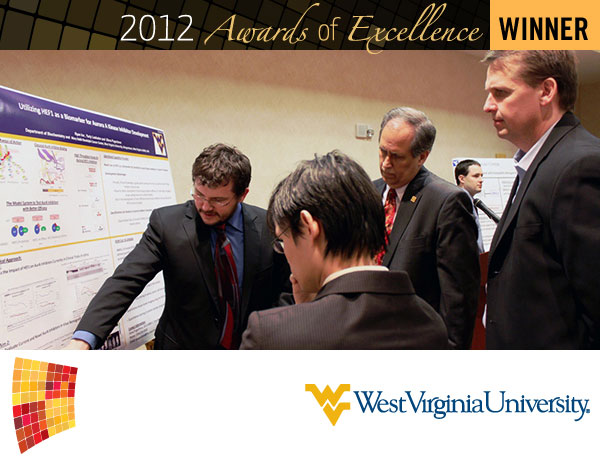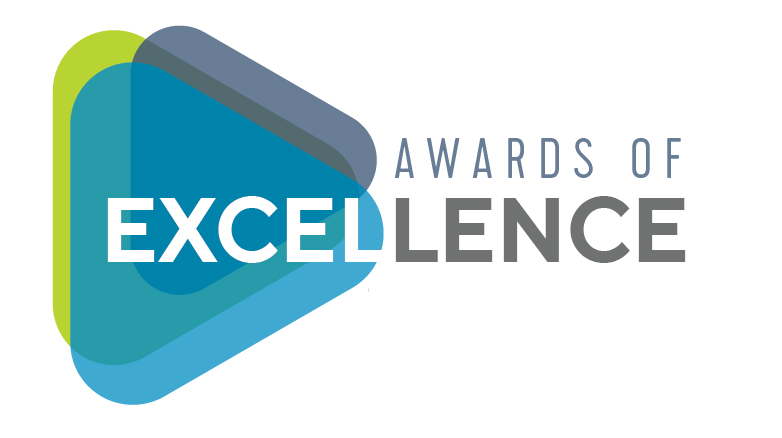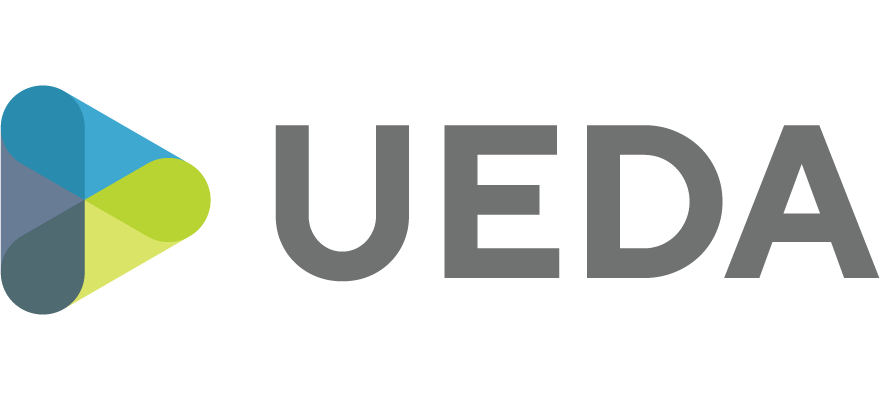Network

| Award Category: | Innovation and Entrepreneurship |
| Project Site: | Linking Innovation, Industry and Commercialization (LIINC) |
| Submitted By: | West Virginia University |
| Contact: | Lindsay Emery, 304.293.0391 |
Case Study
Problem/Background
The role of a land-grant institution has been modernized over time, but has not changed fundamentally. The Morrill Acts of 1862 and 1890 responded to the Industrial Revolution by funding the establishment of land-grant institutions; institutions that focused on teaching practical agriculture, science, and engineering to meet the needs of industry and the state’s citizens. This mission-oriented approach to teaching and research was, and is to this day, expected to directly benefit the local, state, and regional economies. The changing demands of federal and state government and industry now ask land-grant and other higher education institutions to be more effective in advancing and using their research opportunities to fulfill societal needs, while attracting and educating high-quality students to meet the needs of tomorrow’s workforce. This highly visible shift, where economic development is clearly identified as a mission area, goes to the heart of the change process on university campuses.
West Virginia University (WVU), a public land-grant institution founded in 1867, preserves its traditional roots in teaching, service, and research and is a critical proponent to the economic advancement of the state of West Virginia. WVU has recognized the key foci for economic development as it relates to its research capacity: talent, capital, technology, and a nurturing business climate. The underlying theme to cultivate such development is an active commitment at all university levels. The primary challenge is changing the culture throughout the campuses to embrace the evolving character, strategy, and demand of its national, regional, and local mission. WVU’s promotion of innovation, commercialization, and entrepreneurship combines both an internal and external commitment as exemplified by the following:
- President James P. Clements has represented WVU and all of higher education on a national platform through his active involvement in the National Innovation Advisory Board.
- An on-campus Innovation Task Force, made up of senior administrators and deans from STEM, medicine, and business disciplines, identifies and articulates strategic recommendations to improve WVU’s economic impact on the state through research, innovation and commercialization.
- One goal of WVU’s 2020 Strategic Plan states: “Excel in research, creative activity, and innovation in all disciplines.”
This institutional commitment and the environment of the campus are poised for advancement in innovation and commercialization.
A budding program, entitled Linking Innovation, Industry and Commercialization (LIINC), is creating a foundation for cultural change in innovation, commercialization and entrepreneurship on WVU’s campus, and has caught the attention of students, faculty, administrators, and industry representatives. LIINC, funded by the Claude Worthington Benedum Foundation, is designed to establish a commercialization pipeline between faculty researchers and the private sector to increase opportunities for research funding, licensing of technologies, Small Business Innovation Research (SBIR) and Small Business Technology Transfer (STTR) partnerships, patent activity, and jobs in the research and commercialization sector. Providing a local platform on which to initiate and secure relationships between industry and academe encourages a mission-oriented, entrepreneurial mindset for WVU’s students and faculty. The outcomes of such alliances will enhance WVU’s contribution to economic growth in the region.
Partnerships with industry are essential to advancing the university’s commercialization process, but they do not happen by accident. Industry outreach must be strategic, specific, and purposeful in nature. As with other rural regions, WVU is limited by its surrounding market capacity, and needs to proactively reach beyond its immediate sphere, and build partnerships on a global scale in niche research areas. To make this transition takes time; LIINC’s long-term goal to change campus culture requires staying power. By implementing best practices now and securing an institutional commitment for the program’s financial sustainability and growth, LIINC has the opportunity to further strengthen its positive, tangible impact on economic development.
Solution
LIINC has two fundamental objectives that resonate through each specific event: increase innovative activity and involvement on campus and implement best practices identified by peer institutions. LIINC hosts a variety of on-campus events within its 18-month life span to encourage interdisciplinary creative thinking, technology transfer activity, and research between faculty, graduate students, and industry representatives. First, college-specific dinners focus on graduate student research, and maintain a 1:1:1 ratio with each student, faculty advisor, and industry representative. Second, based on WVU faculty requests, college-specific panels bring in peer faculty who share their experience for balancing teaching, research, service, and entrepreneurial pursuits. Third, the most expansive LIINC events are receptions showcasing faculty research in three disciplines identified as WVU research strengths: Department of Defense-related research, bioscience and biomedical research, and energy and environmental research. These receptions include panel presentations from industry representatives, which serve as opportunities for companies to share with university faculty what type of research and development they are seeking. This knowledge inspires applied and mission-oriented research from WVU faculty. To model best practices, diverse teams of senior administrators visited peer institutions that have been successful in technology transfer and entrepreneurship. Activity at these peer institutions reinforced WVU’s institutional commitment to interdisciplinary research, industry outreach, and technology commercialization.
To convince faculty and industry representatives to support WVU’s innovation initiatives, LIINC has identified and implemented several best practices.
- First, LIINC is a resilient program. Immediately following each LIINC event, feedback from faculty, administrators, and industry representatives is used to plan future events. Continuous improvement is a constant focus, striving to accommodate and appeal to the participating parties.
- Second, LIINC is not a costly operation and thus readily transportable. With one FTE and a modest operating budget, LIINC runs on about $100,000 a year. Strategic placement of funds for maximum (primarily qualitative) return can be applied to nearly any university infrastructure, and is easily expanded and customized to fit any research scenario.
- Third, LIINC builds connections between university faculty and companies for funding opportunities. In collaboration with the Office of Technology Transfer within the Office of Research & Economic Development, LIINC is the infantry directing potential partners to WVU’s “front door” for research and commercialization.
- Finally, the services and opportunities that LIINC provides attract the entrepreneurially-oriented faculty and students on campus.
As WVU seeks to refocus its orientation, encouraging faculty and students to be more innovative and creative, LIINC identifies those individuals who voice interest in an innovative culture change and taps them to become liaisons who nurture such change within their departmental and college domains.
Prior to LIINC’s inception in September 2011, a program of its nature had never previously existed at WVU. As both a blessing and a challenge, LIINC had a clean slate from which to build and grow. But starting LIINC from scratch required several grassroots approaches to convince administrators, faculty, and students that LIINC existed as a service-provider and facilitator. LIINC offers administrators, faculty, and students a unique opportunity to share their research with an audience unlike those they regularly interact with at academic conferences. Rather than presenting to their peers, researchers were presenting to members of the private sector and to the business representatives who are constantly on the lookout for new, creative ideas, methods, and projects.
As most researchers had little to no prior experience sharing their work to such an audience, introductory coaching, specific outlines, and constant communication were necessary to increase their likelihood for success. One-on-one, in-person meetings have been held with every single graduate student and faculty member who has presented a poster at a LIINC event. A popular military format, the quad chart, is introduced to and required of all poster presenters to help them share their research in a concise, applied-research format. This incites the STEM students and faculty to think from a business perspective and not just scientifically. LIINC has held over 50 one-on-one meetings of this nature, and has received overwhelming praise from the private sector participants on the simplicity, comprehension, and applicability of the quad chart format.
LIINC would not have been as successful to date without the support, feedback, and endorsement from the institution’s deans. The LIINC manager regularly attends and participates in the Innovation Task Force, and executes the task force’s recommendations. Managed under the direction of the Office of Research & Economic Development, and with regular contact with the Office of Technology Transfer, LIINC has held collaborative relations with several key campus offices. The trips to peer institutions have established and strengthened contacts across state lines, and the WVU Research Office worked closely with Fourth Economy Consulting, a firm based in Pittsburgh that addresses economic development, innovation, and commercialization in public and private sectors. Fourth Economy Consulting compiled a report for WVU that cited WVU’s market conditions and provided recommendations for the university leaders and select offices to take ownership of innovation and commercialization efforts. Several of the recommended actions are manifested through LIINC.
Each LIINC event is organized with the vision of the long-term economic impact relationships between the university and the private sector will bring to the local, regional and university community. LIINC showcases West Virginia University as a key venue for collaboration with faculty researchers in the areas of Department of Defense-related research, bioscience and biomedical research, and energy and environmental research. Access to WVU’s cutting edge research and emerging techniques and technologies, investment opportunities, and access to high quality interns and future employees are only some of the potential outcomes LIINC aims to initiate through the business development events.
Results
Activities to date have resulted in the active participation from 113 representatives of 76 companies, 174 WVU faculty and 26 graduate students. Industry representatives have traveled to campus from as far as California and Arizona to as close as across the street in Morgantown, WV. These LIINC events have led directly to promising conversations with representatives from Pfizer, Eli Lilly, Raytheon Missile Systems, and StarKist, to name a few, each of which holds the potential for a quality, new relationship with WVU. Collaborative efforts have also developed between new inter-company relations and across colleges. Over 95% of the survey respondents for the five events agreed that WVU should host more events, with a majority of respondents, faculty and industry alike, stating that they established contacts with whom they will continue conversation, and found the event valuable with respect to their research and/or future business interests.
For those involved, LIINC has played a role in changing the way faculty and students think about research. One faculty member from the WVU Department of Physiology and Pharmacology shared that in her 20 years of doing research, she had never considered commercialization. However, after attending the bioscience and biomedical LIINC event, she met with a patent attorney to discuss her research and IP potential. This is one example of translating a faculty researcher’s basic science approach to ask and answer the question: How can I apply my research to the marketplace? Addressing this question attracts an entirely new purpose, perhaps one with a more tangible meaning, for faculty and students alike. While this innovative perspective is not new, its novelty on WVU’s campus illustrates how impactful LIINC has been in opening doors in the commercialization realm, and that story has been told in numerous internal and external media outlets.
In addition to planning and organizing the logistics with the grant’s objectives in mind, all follow-up measurements are recorded and analyzed by the LIINC manager. Immediate quantitative measurements are based on attendance, survey responses, and when possible, NDAs, grant proposals, MTAs, and the like, organized through the Office of Technology Transfer. However, a majority of value and qualitative support for sustaining this program is exemplified through anecdotes and survey comments.
A WVU faculty member wrote: “I was greatly impressed by this event and strongly urge continuing similar events until we reach a saturation point (which we will see plainly by attendance patterns) after which we might try spacing the events out more in time.” An industry representative had a similar comment: “I was very pleased with the event and the caliber of representatives from both the university and industry present at the event. I thought the event was incredibly well organized and communication was excellent. Overall, the event was fantastic and I look forward to attending next year’s.” A PPG representative, who serves as the university liaison for the Pittsburgh/Morgantown region, said that of all of the university events he had attended, the LIINC graduate student dinner was by far the best format he had ever seen.
Future Considerations
The Office of the Vice President for Research has confirmed West Virginia University’s commitment to financially sustaining LIINC through FY 2014. This investment from the WVU Research Office, the Health Sciences Center, and the STEM and Business Deans, following the Benedum grant’s termination, is a testimony to the value WVU places in LIINC’s efforts and its relevance to faculty. LIINC has engaged university faculty and administrators to achieve institutional buy-in; the program activities have established corporate relationships, provided new support for research faculty, and elevated the awareness and involvement on campus related to innovation and commercialization. The future of LIINC reflects the growth, needs, and goals of the university faculty, students, and administrators, as well as the industry partners. LIINC’s flexible strategy and activities will continue to evolve in response to the long-term interests of the participating parties.
By LIINC’s end date of March 31, 2013, the program will have coordinated five research receptions, six graduate student dinners, four college-specific forums, four trips to peer institutions, and at least two company-specific events.
The first phase of LIINC built a foundation for industry contacts, faculty involvement, presentation formats, and execution strategies. Each subsequent activity will build off of previous feedback to make it bigger, better, and more valuable for the attending audience. Some potential format changes may include an all-day conference with several panels, industry speakers, and unique opportunities for WVU researchers to connect with the private sector. Additional expansion will ideally increase the involvement of WVU alumni and industries from around the country. As a component of WVU’s steps in revamping the faculty reward system, LIINC will host an awards ceremony recognizing innovation projects and advancements completed by our faculty and students. LIINC is a single route in the economic development road map of the State of West Virginia and the University, and will continue to actively serve as the facilitator for increased and improved collaboration between WVU’s research efforts and the private sector marketplace.

